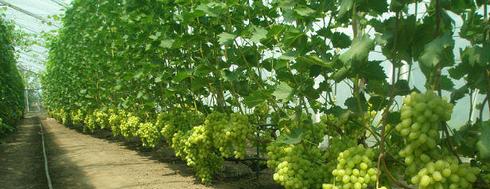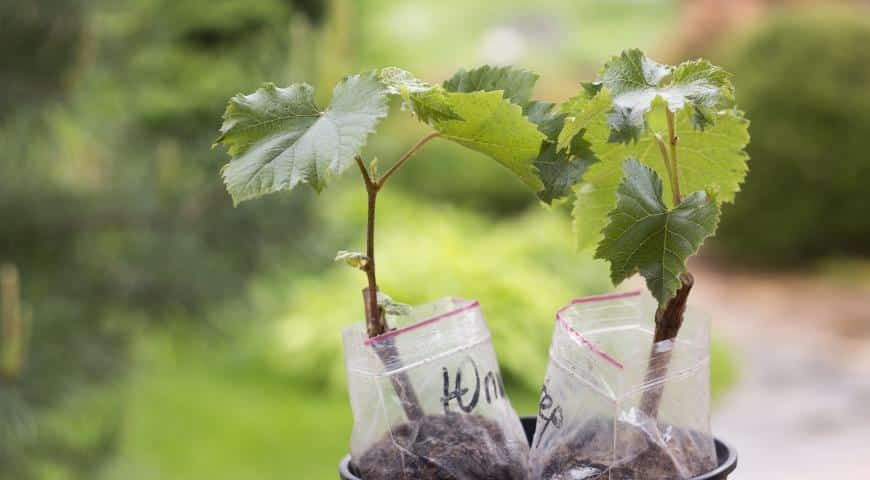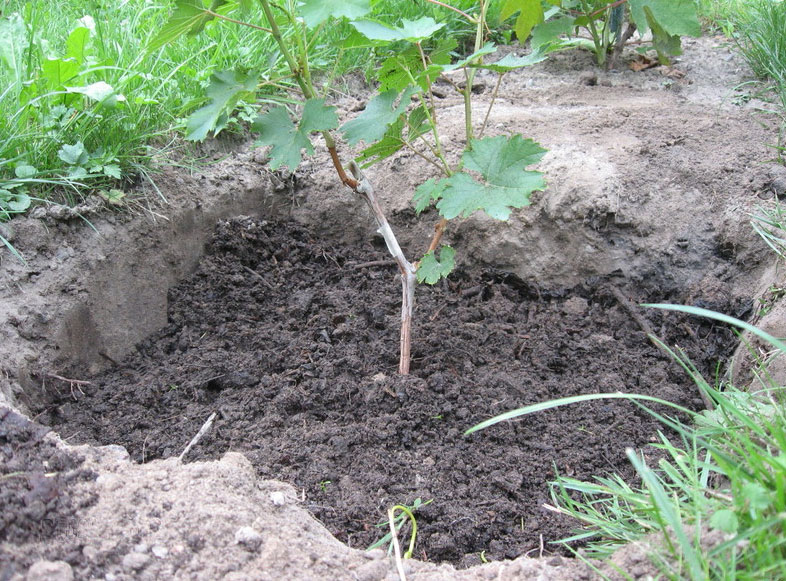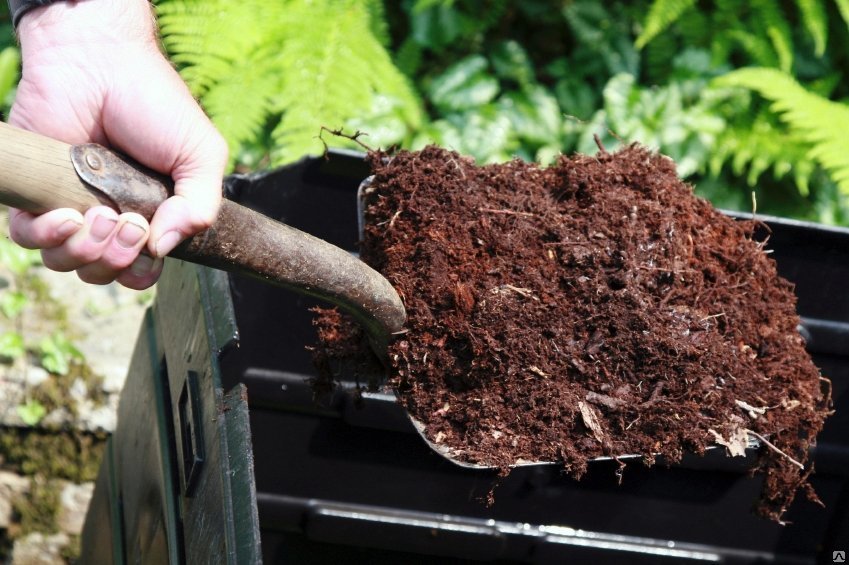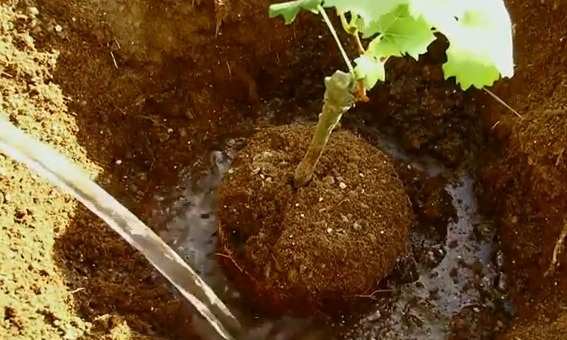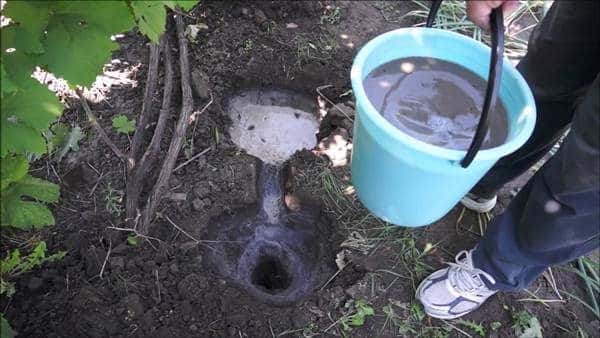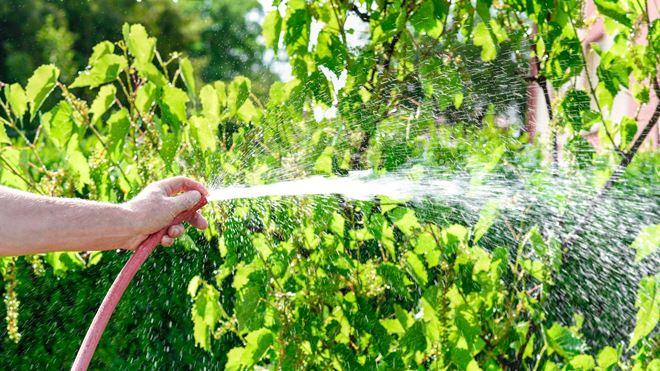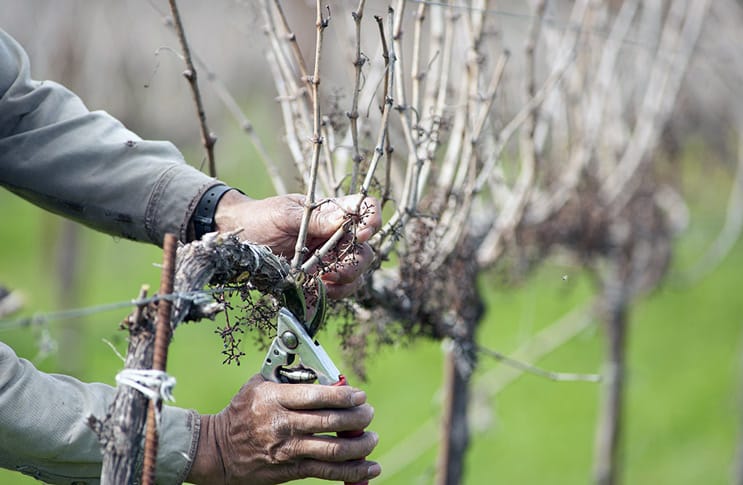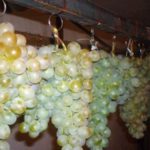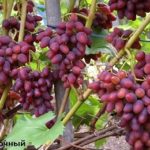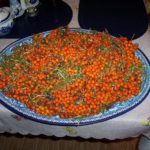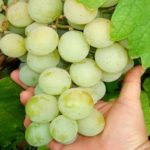Grapes are among the heat-loving plants. At the same time, the crop can be grown in the Moscow region. Moreover, the latter option, under certain circumstances, is more convenient. When planting grapes in the Moscow region and growing them without a greenhouse, the plant is not exposed to pathogenic microorganisms characteristic of heat-loving regions.
Features of growing grapes in the Moscow region
To achieve ripening of grapes, you must follow several rules on how to grow the plant. It is recommended to plant the berries on the south side of the site, near buildings or any structures along which the vine will curl. Varieties with berries with a dark tint place higher demands on the growing zone.
Planting crops in the Moscow region is carried out according to several rules:
- depending on the type of soil, a hole is dug 25-50 centimeters;
- before planting, the bottom of the pit is trampled down, after which it is filled with preheated water;
- A mixture of organic matter, ash, potassium, nitrate and superphosphate is used as fertilizer.
For the Moscow region, varieties are chosen that have time to ripen before the ambient temperature drops to sub-zero levels. The crop is planted in open and heated ground.
By observing all the characteristics of cultivation, you can achieve constant and high yields. It is also important to cover the grapes before the onset of cold weather.
Tips for choosing a variety
The list of the best grape varieties includes early, frost-resistant and non-covering plants. Suitable for growing in the Moscow region:
- Aleshenkin. These grapes, after planting in the Moscow region, produce a harvest in 118 days. The brushes are very large (reach 1.5 kilograms). This variety is distinguished by the fact that the berries do not contain seeds. Aleshenkin remains viable at a temperature of -26 degrees. However, this variety has poor resistance to fungi.
- Victoria. The grapes of this variety are harvested after 4 months. The berries are distinguished by their dark pink hue, large size and sweet taste. The weight of the brush reaches 1 kilogram.
- Lydia. The berries are dark in color and have a sweet and sour taste.Lydia tolerates waterlogging of the soil and the effects of mildew and oidium well. The harvest appears 5 months after flowering. Lydia forms small brushes weighing about 100 grams.
- Kuderka. Despite the fact that the grapes bear fruit late, the vine has time to ripen in the Moscow region. This is explained by the fact that the variety can withstand frosts down to -30 degrees and makes few demands on the growing area. Couderka is considered a technical variety of grape, as it is used mainly for making wine.
- Jupiter. The harvest can be harvested after 4 months. The weight of Jupiter's clusters reaches 500 grams. The berries are purple in color and have a sweet and slightly nutmeg flavor. Jupiter can withstand frosts down to -27 degrees.
- Sovering Tiara. The plant produces a harvest by mid-August. The weight of the bunch is small and is about 200 grams. The three-year-old vine can withstand frosts down to -30 degrees. The taste of the berries is sweet and sour.
- Valiant. The grapes are distinguished by powerful vines, the length of which reaches 10 meters. The harvest can be harvested closer to the beginning of autumn. An adult vine can withstand frosts down to -10 degrees.
- Phenomenon. The white-yellow berries are mainly suitable for making wine. The weight of the bunch reaches 1 kilogram. This variety produces a harvest by early autumn.
- Alpha. The variety is well suited for planting in the Moscow region, as it can withstand frosts down to -35 degrees. Alpha produces a harvest by the end of August. You can harvest up to 10 kilograms from one vine.
- Buffalo. In the Moscow region, such grapes produce a harvest in mid-September. The plant manages to ripen before the onset of autumn cold weather.
For the Moscow region, it is recommended to select self-pollinating crops. The optimal choice would be a crop that can withstand the effects of pathogenic fungi.
Landing dates
In order for the crop to take root in the Moscow region, it is necessary to adhere to the deadlines for planting the vine. Moreover, the choice of period is influenced by the type of variety. Planting of crops in the Moscow region is carried out in spring or autumn. If the first option is chosen, you must wait until the soil warms up to a temperature of +10 degrees.
It is important not to miss this moment. Late seedlings do not take root well.
It is recommended to leave annual plants for autumn. Such grapes should be carefully removed from the storage container. In young shoots, the roots are damaged due to minor loads. Planting must be completed by mid-October.
Selection of seedlings and site
The choice of planting site in the Moscow region must be done with special diligence. Despite the fact that the plant loves an abundance of light rays, growing the vine in open areas is not recommended. Such planting in the Moscow region will lead to rapid freezing of seedlings.
Suitable areas for grapes are those that meet the following requirements:
- south or southwest side;
- during the day it is illuminated by the sun for a long time;
- there is wind protection;
- there are no natural slopes;
- In spring the earth warms up quickly.
Grapes can grow in different types of soil. Black soil or sandstone are considered optimal for planting. Can also be grown in loam. Moreover, the latter option is the most suitable, since this type of soil is looser, which means it warms up faster in the spring. Planting the crop in wetlands is not recommended. Most varieties do not tolerate excess moisture, which causes fungal diseases to develop.
It is recommended to purchase seedlings in the spring, before the first days of April. For planting in the Moscow region, sprouts with lush, light-colored roots are suitable.When working with seedlings, it is necessary to prepare planting material. To do this, the roots are trimmed so that the resulting length is about 18 centimeters. Before planting, the lower part of the seedling is dipped in a solution of clay (2 parts) and fermented mullein (1 part), and the upper part is dipped in molten wax or paraffin.
Boarding procedure
To plant crops in the Moscow region, it is recommended to choose zones with multi-layer soil and acidity in the range of 6.5-7. Grapes should not be grown in soil with a high limestone content.
The soil is prepared by mixing in equal proportions:
- loam;
- crushed brick (gravel);
- sand;
- humus.
Ash and superphosphates are also added to the composition at the rate of 500 grams and 50 grams, respectively, per 1 square meter. Such soil freely allows water and air to pass through, providing normal nutrition to the vine. The optimal time for planting a crop with a closed root system is May-June, with an open one - April-May or October.
If you plan to grow several plants on the site, holes should be dug at a distance of more than 1.5 meters.
Regardless of the chosen variety, the crop in the Moscow region is planted to a depth of up to 25 centimeters. Before burying the plant, you must:
- straighten the roots, thereby preventing kinking;
- place the top bud at a depth of 5-8 centimeters;
- tilt the vine towards the north.
After planting, the seedling must be tied to a support along which it will curl. At the end, the grapes are watered generously with warm water and covered for a while with a dark film.
Grape care
Regardless of the type of variety grown in the Moscow region, grapes require care. By following certain recommendations, you can get a large harvest every year.There are several rules on how to care for grapes growing in the Moscow region. Starting in early spring, it is necessary to apply mineral fertilizers. The soil around the vine is mulched using rotted leaves, which are laid to a depth of more than three centimeters.
When growing a plant in the Moscow region, it is important to prevent magnesium deficiency in the soil. A deficiency of this microelement leads to the death of the vine. To prevent the development of diseases, the plant should be sprayed every two weeks. For this, a special product is used, which is prepared by mixing 250 grams of a mixture of magnesium and sulfur and a bucket of water.
In the spring, mineral fertilizers with a liquid composition are also applied every week (before the berries ripen). The following is used as fertilizing:
- for soil with a high alkali content - compositions that acidify the soil;
- for acidic soil - alkalizing compounds.
During the period when the growing season has begun, humus from the leaves should be added, while simultaneously treating the trunk with fugicides. It is important to timely water the grapes, avoiding waterlogging of the area. When growing a plant in the Moscow region, you should ensure that water penetrates to a depth of 50 centimeters. Usually 10 liters applied every week is sufficient for the vine. Watering is carried out in grooves that break through near the trunk. At the end of August, they stop supplying water, as during this period the berries gain flavor.
When caring for vines, agricultural techniques are not usually used. The need for mechanized installations arises when several plants are simultaneously grown on a site.
Shaping and trimming
Forming the crown allows you to avoid the appearance of shoots that will not produce a harvest. But for this you need to know how to prune grapes. When growing a plant in the Moscow region, the crown begins to form in the fall, from the second year. During the first season, experienced gardeners recommend not touching the seedlings. Within a year after planting, the vine should get stronger and gain the necessary strength.
Starting from the second season, they begin to form shoots. Pruning is carried out in two stages:
- In autumn. Before cold weather, cut down to 2/3 of the vine that requires removal.
- In the spring. Frozen or defective shoots are removed.
It is recommended to monitor the development of shoots from the beginning of the appearance of shoots. Large branches should not be allowed to appear. In this case, the grape yield will decrease.
The simplest method of circumcision is considered to be the Guynot method, which involves performing the following manipulations:
- In the first year after planting, they are pruned in the fall, leaving two “eyes” above the soil surface.
- In the second year, 2 regrown annual shoots are cut off. The first is left long to form clusters, the second is shortened to three “eyes”.
In the third year, a strong vine will appear from the second “eye”, which will produce a harvest.
How to cover grapes for the winter?
Preparation for the cold season begins in autumn. Grapes growing in the Moscow region should be covered for the winter during the period when persistent night frosts with a temperature of -2 degrees appear. In the process of preparing the plant for cold weather, soil or peat is used. To provide shelter for the winter, the cut shoots are covered with 10-15 centimeters of soil.
If necessary, the vine, using improvised means or branches, is fixed to the surface of the earth. The top of the plant is covered with spruce branches.If the vine grows along the wall, boards are laid on top of the cut shoots, which will protect the grapes from water flowing from the roof.
In order for the vine to retain its ability to produce crops, it is recommended to collect as much snow as possible and place it in the place where the crop grows. To insulate the plant, you should not use plastic film. In the absence of spruce branches, straw or leaves are used.
Removing cover in spring
In spring, the crop is freed from shelter. The earthen layer is removed, and the organic insulation is removed only for a day. At night, it is recommended to re-lay leaves or spruce spruce branches. During the period from March to May, sticks or other means of fixing the crop to the ground should not be removed. It is allowed to completely remove the plant from the insulation when constant warm weather sets in. From this moment on, the culture can be tied up.
Harvest procedure
Most varieties produce harvest either in late August or early September. Some types of grapes ripen in the Moscow region for one month. It is important to harvest the crops on time. Overripe berries have an unpleasant taste and are suitable for making homemade wine. In addition, late harvest attracts pests.
The berries are picked by hand. The bunches are trimmed using garden pruners. When harvesting, care should be taken not to damage the berries. Fruits with defects quickly rot, causing the entire bunch to suffer.


